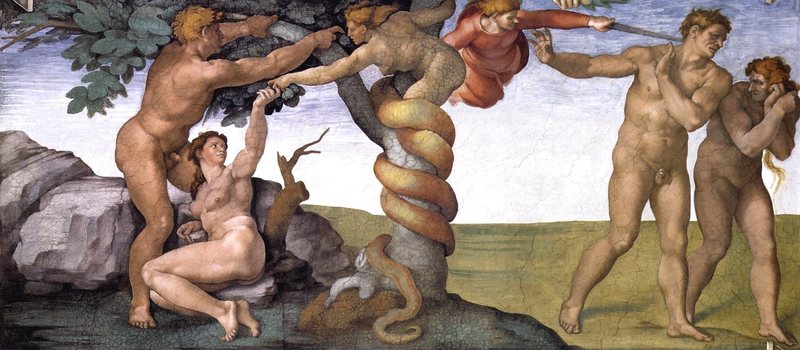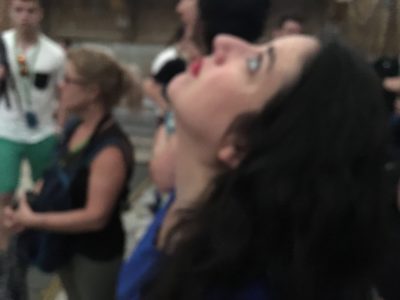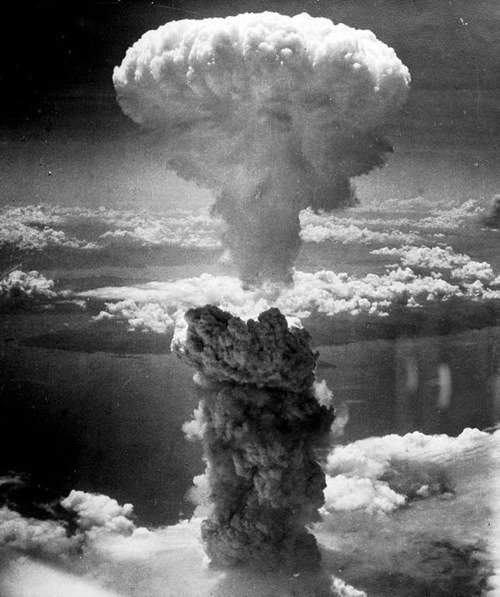
S P A C E Alliance Studio Residency Artist Zoya Sardashti shares some of the inspiration behind her fall 2019 residency at Art Produce. Entitled How Do We Dress for the Weather?, it is the sixth installment in her Waking Up Iranian American series, a life project that includes 5 one-to-one performances, a dance, and performance lecture. Catch the performance at DISCO RIOT’s S P A C E Showcase November 7-9, 2019.
How Do We Dress for the Weather? contributes to larger conversations around feminism, environmental activism and the right to claim space. It is linked to issues of ecofeminism, human laws and interdependence.
If art history has defined positions of gender and natural order through icon, how can we use contemporary movement to rupture an embodied history of segregation?

I could only sense the level of threat they felt, she posed to him, when I visited a construction of this ‘sacred’ space. Before entering I was told to be silent and to not take photos or videos. I looked up and noticed something unexpected. Distrust begins as a bulge in the tail of a snake called Eva. Whether or not she was ‘the first woman’ of all creation was no longer relevant. The ugliness located at the bulge of her tail seemed to suggest the appearance of an undigested apple, representing wisdom that defied His position as all knowing and all loving. To be feared. So this is why we cannot trust each other. An epiphany is a suppressed scream. What is above? A submission to being between the suspension of dis/belief. I cannot believe this is happening, but this is happening. People travel from all over the world to be in this space. Imagine what we might do if we were allowed to talk.

My dear friend and on-going collaborator, Susan Peffer, took this photo. At the time I was unaware her smart phone was out.
How Do We Dress for the Weather? uses cultural myths to locate intention and remedial action in a post-apocalyptic scenario where bodies have forgotten how to move.

Everything was black, had vanished into the black dust, was destroyed. Only the flames that were beginning to lick their way up had any color. From the dust that was like a fog, figures began to loom up, black, hairless, faceless. They screamed with voices that were no longer human. Their screams drowned out the groans rising everywhere from the rubble, groans that seemed to rise from the very earth itself.
The expression above is an excerpt from Hisako Matsubara’s Cranes at Dusk. The author was a child in Kyoto at the time the atomic bomb was dropped. Her description is based on the memories of survivors.
You have to have ways to maintain communications in a nuclear environment, a situation bound to include EMP blackout, brute force damage to systems, a heavy jamming environment, and so on.
The definition describing the aftermath of a nuclear attack in technostrategic language. This is from Carol Cohn’s Sex and Death in the Rational World of Defense Intellectuals. Cohn is the founding director of the Consortium on Gender, Security and Human Rights. In this text she links the domesticated and humanized language and imagery as a way for defense professionals to distance themselves from the reality and anxiety of war. Additionally, the ‘technostrategic’ language that is used is a way to restrict debate solely to defense intellectuals and professionals who are versed in the language. It is argued that this effectively dismisses and silences voices from outside the military and nuclear sphere. Cohn suggests that the reference point of the language revolves around the weapons themselves, thus, because the language is designed to talk about weapons there is no way that concerns of human life or society can be legitimately expressed. If it is not part of the language, these values or concerns are effectively dismissed or deemed illegitimate. This piece demonstrates how important language is and how it can be gendered. It brings up questions about language relating to whom it allows communications with and what it allows one to think as well as say.
We are inside the body of a snake.
Through the body of a snake we are connected.
In this way we share the same body, connected by a never ending tail.
This tail begins in the atmosphere below.
It is a point where no man has landed.
The second installment of How Do We Dress for the Weather? is informed by Nicole Roerick and Sarah Allsion McCann.
How Do We Dress for the Weather? is dedicated to Judith Butler and Karen Barad. Without their contributions to moving through and with the practices of thought and theory this performance would not be possible.
Catch Zoya’s work at the
S P A C E Alliance Showcase
November 7-9, 2019
Queen Bee’s Arts and Cultural Center
3925 Ohio st. North Park, CA 92104


